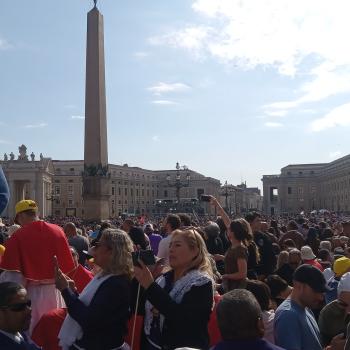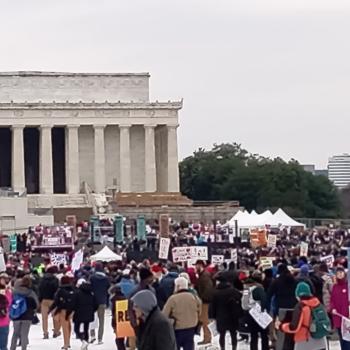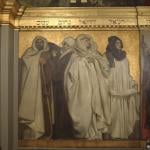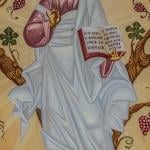An important liturgical event may soon take place: The pope could wash the feet of both male and female inmates next Thursday when he goes to to a juvenile facility. This would constitute some kind of authoritative statement on the longstanding argument about whether the feet of men alone should be washed on Holy Thursday. The current rubric reads: “The men who have been chosen (viri selecti) are led by the ministers to chairs prepared at a suitable place.” This has been interpreted to mean that only men should have their feet washed. Yet Pope Francis may wash the feet of women.
Actions such as this have caused great concern to many Catholics who are very protective of what they think of as “Tradition.” In regard to what they mean by this word, they, like Donald S. Prudlo at Crisis magazine, refuse to accept Congar’s distinction between Tradition and tradition: “One should not blithely accept Fr. Congar’s exceptionally damaging dichotomy between ‘Tradition’ and ‘traditions; that has been drummed into our heads. For it is those despised ‘traditions’ which held, protected, and undergirded the ‘Tradition’; through the centuries.” Yet why did Congar raise such a distinction? (And to be fair, he did not “despise” traditions). He raised the distinction because things that have often long been thought to be Tradition turned out to be traditions. That is simply a historical fact in the history of the Church, and to ignore it does no one any good. It is to fall into the category of those accused by Jesus in Mark 7:8, “You disregard God’s commandment but cling to human tradition.”
So in lieu of what Pope Francis may do, two points often thought to be about Tradition must be made about the Last Supper of Jesus:
- Jesus may have washed the feet of women, and so can we
- The Last Supper was not the first Mass
The first is simply a real possibility, and I don’t wish to go into it too much. There were probably women at the Last Supper, and that’s not a big deal. The point of Jesus washing the feet of the disciples who were present had nothing to do with anything but making a profoundly kenotic point about the meaning of the Incarnation and love of one another. Women are included in that love, and so their feet can be washed.
Second, because many cling to the Tradition that the Last Supper was the first Mass, they think that the priesthood was formally instituted at this moment, and so women could not have been there. But I would argue that this is a tradition, not Tradition. Yes, the Last Supper was the generative moment that would be later interpreted by the Church as Jesus promise to be with his Church in the Eucharistic celebration. But that is very different from being the first Mass. At the Last Supper there was as yet no sacrifice. There was no death on the cross. There was no sending of the Spirit. There was no resurrection. There was no confirmation of the mission of the Son by the Father. Robert Daly argues that in Dominicae cenae, John Paul II goes beyond Trent in making this claim:
Dominicae cenae follows Trent in viewing the Last Supper as the moment when Christ instituted the Eucharist and, at the same time, the sacrament of the priesthood. But the pope also goes beyond Trent in teaching that the Last Supper was the first Mass. This view was once favoured by Catholic theologians; but most now argue that the Church was constituted in the Easter-event, and that the sacraments are also Easter realities grounded on the sending of the Holy Spirit.
The tradition at Trent was that St. Peter recited the same Eucharist prayer that they did! That was a tradition, not Tradition. Keeping the two carefully distinct is important. Of course, we don’t always know which is which, and that is where discernment, prayer, trust in the magisterium and trust in the
Holy Spirit come into play. But if Pope Francis washes the feet of women, I hope that we will recognize the washing of the feet of men only as being what it was: tradition not Tradition.












